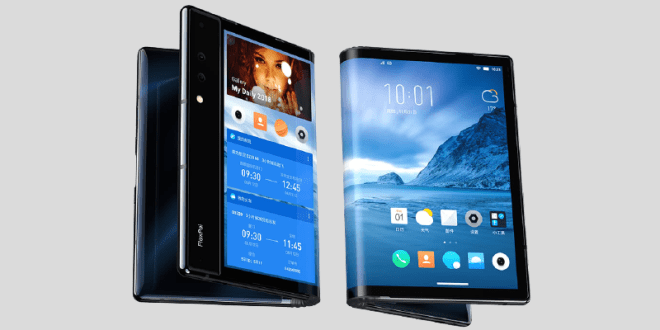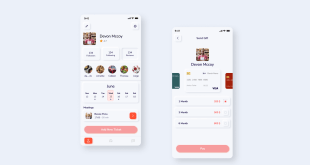The rapid evolution of smartphones has redefined the way we interact with technology. Mobile UI/UX design has come a long way from traditional interfaces to the revolutionary foldable devices that have captured our imaginations. However, the journey doesn’t end there. As technology continues to advance, the next frontier of mobile UI/UX design promises to unlock even more exciting possibilities, elevating the user experience to unprecedented heights. In this blog, we will explore the future of mobile UI/UX design beyond foldables, delving into innovative concepts, templates, and best practices that will shape the mobile landscape for years to come.
Adaptive Layouts and Responsive Templates
The first key aspect of the next frontier is adaptive layouts and responsive templates. As screen sizes and resolutions continue to diversify, designing for multiple devices can be challenging. The solution lies in adaptive layouts that seamlessly adjust to various screen dimensions. UI designers will need to craft responsive templates that can fluidly scale across different devices, ensuring a consistent and engaging user experience regardless of the screen they are using.
Gesture-Driven Interactions
In the era of foldables, gesture-driven interactions have already gained significant traction. The next wave of mobile UI/UX design will take this a step further by refining and expanding gesture-based navigation. Intuitive gestures will replace traditional buttons, offering users a more immersive and natural way to interact with their devices. The challenge lies in striking a balance between innovation and learnability, ensuring users can quickly grasp and utilize these new gestures effectively.
Augmented Reality Integration
Augmented Reality (AR) is poised to become an integral part of the mobile UI/UX landscape. The next frontier will witness AR technology being seamlessly integrated into mobile apps, providing users with enhanced experiences that blur the lines between the physical and digital realms. From virtual try-ons for shopping apps to interactive AR gaming experiences, the potential for AR in mobile UI/UX design is limitless.
Voice User Interfaces (VUI)
As voice recognition technology becomes more accurate and ubiquitous, Voice User Interfaces (VUI) will play a pivotal role in shaping the next generation of mobile UI/UX design. VUI allows users to interact with their devices using voice commands, making tasks quicker and more convenient. Incorporating VUI into mobile apps will require careful consideration of context and user intent, ensuring that the voice interactions feel natural and intuitive.
Dark Mode and Color Customization
Dark mode has gained immense popularity for its visual appeal and reduced eye strain, especially in low-light conditions. Looking ahead, mobile UI/UX design will delve into more advanced color customization options, allowing users to tailor their app interfaces to suit their preferences. From choosing primary colors to defining accent hues, empowering users with personalized color schemes will enhance engagement and brand loyalty.
Seamless Cross-Platform Integration
In the quest for a unified user experience, cross-platform integration will be a critical focus in the next frontier of mobile UI/UX design. Users expect a seamless transition when switching between devices, and designers will need to prioritize smooth synchronization across platforms. Whether users switch from a smartphone to a tablet or a laptop, the app experience should remain consistent, allowing them to pick up right where they left off.
Microinteractions and Delightful Details
It’s the little things that make a big difference. Microinteractions, such as animated buttons, subtle transitions, and playful feedback, add a touch of delight to the user experience. The next frontier of mobile UI/UX design will place greater emphasis on these small but impactful details that evoke positive emotions and create a lasting impression on users.
Privacy-Centric Design
With growing concerns over data privacy and security, mobile UI/UX design will increasingly prioritize privacy-centric features. From clear and transparent data consent prompts to simplified permission management, designers will need to reassure users that their data is handled responsibly. Privacy-focused design will not only improve user trust but also align with evolving regulatory requirements.
Inclusive Design for Accessibility
Accessibility remains a crucial aspect of mobile UI/UX design, and the next frontier will see a stronger commitment to inclusive design principles. Designers will strive to make mobile apps more accessible to users with disabilities, ensuring that everyone can enjoy a seamless and fulfilling experience. This involves accommodating diverse needs, such as voice-assisted navigation, text-to-speech functionality, and high contrast themes.
Augmented Personalization
Personalization has been a cornerstone of modern mobile apps, but the next wave will usher in augmented personalization through AI-driven insights. By analyzing user behavior and preferences, apps will anticipate their needs and offer tailored content and recommendations. The challenge lies in maintaining a delicate balance between customization and privacy, providing personalized experiences without being intrusive.
Final Words
The future of mobile UI/UX design is teeming with potential. From adaptive layouts and gesture-driven interactions to AR integration and VUI, the next frontier promises a captivating user experience that redefines the way we interact with our devices. Privacy-centric design, inclusive accessibility, and augmented personalization will further elevate the mobile experience, creating apps that resonate with users on a deeper level. As technology continues to evolve, the possibilities are boundless, and mobile UI/UX designers must stay at the forefront of innovation to shape the future of the digital realm.
Commonly Asked Questions
Q1: How will adaptive layouts benefit mobile users?
A1: Adaptive layouts ensure that mobile apps adjust seamlessly to various screen sizes, providing users with a consistent and user-friendly experience across devices.
Q2: What role does augmented reality play in mobile UI/UX design?
A2: Augmented reality enriches mobile apps with interactive and immersive experiences, allowing users to engage with digital content in real-world environments.
Q3: Why are gesture-driven interactions gaining popularity in UI/UX design?
A3: Gesture-driven interactions offer a more natural and intuitive way for users to interact with their devices, enhancing the overall user experience.
Q4: How does dark mode benefit mobile users, and why is color customization important?
A4: Dark mode reduces eye strain and enhances visual appeal, while color customization allows users to personalize app interfaces to match their preferences.
Q5: What are the key principles of privacy-centric design in mobile apps?
A5: Privacy-centric design involves clear data consent prompts, simplified permission management, and responsible data handling to prioritize user privacy and trust.
 webfily
webfily



